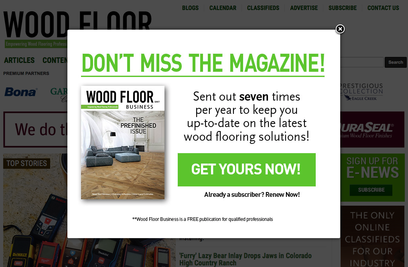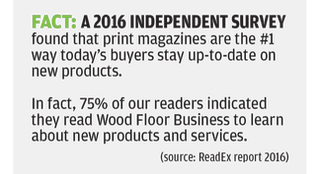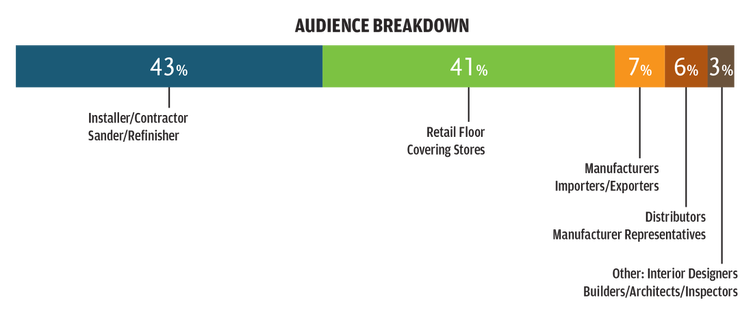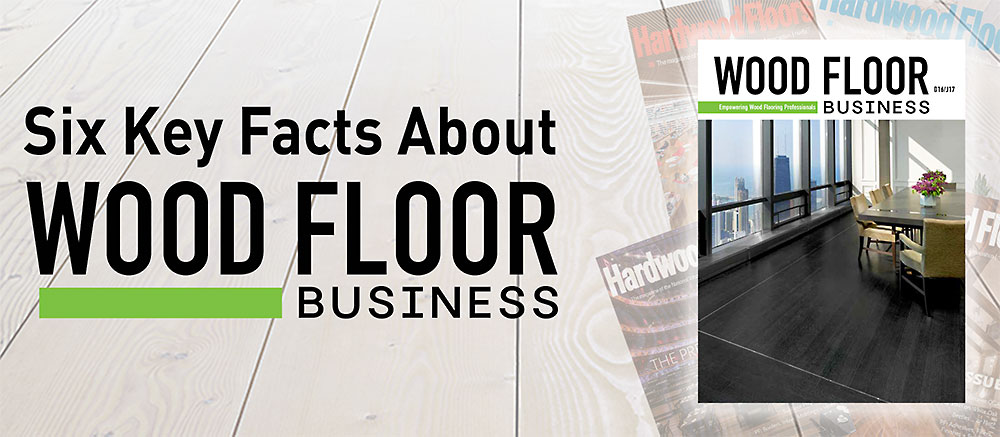|
Getting lost in the numbers is easy when it comes to website and email metrics. Sometimes these stats can lead to more confusion than clarification. Today, I’m breaking down three of the most important metrics by explaining what they mean and why they’re important to your bottom line. 1) Impressions: How many prospects were exposed to your brand message? Impressions are the number of times your advertisement is actually seen (1 view = 1 impression). Arguably, this is the most important stat when measuring the effectiveness of your campaign––the more times your ad is seen by qualified prospects, the better. The number of impressions you have is relative to your total web traffic and open rate, but it isn’t always the same thing. Impressions are vital for brand awareness and brand equity. Suggestion: The more places your brand message can be found, the higher your impressions will be because you’re creating more opportunities for your prospects to see your message. This is why cross-channel advertising is so important. 2) Clicks: How many people are clicking on your campaign? This metric is crucial because it means people are taking your call-to-action seriously and demonstrating interest in what you have to offer. This is where ad creative really comes into play. Whether it’s a banner ad, email message or social media post, if clicks are your goal, we highly encourage including a strong call-to-action and incentive to click, such as a promo code. Clicks indicate small victories – even if that person doesn’t make a purchase, they’re actively engaging with your brand and moving through the sales pipeline Suggestion: If clicks are your goal, try A/B testing your call-to-action to see what generates more conversions. The difference in your A/B can be anything from the wording to the color of the button. 3) Click Thru Rate: How many people that saw your ad actually clicked? Getting prospects to visit your website or open an email is only part of the marketing puzzle. People actually performing a desired action such as clicking on your banner ads, email links, product images, etc. is the next step in the process. That’s where the click-thru-rate (CTR) comes in. The CTR shows the number of people who click on the campaign compared to the total number of impressions (the number of times your ad was seen). Regardless of results, it’s useful to look at these campaign metrics. If something performed well, you can determine what about it might have resonated with the audience (and on the flip side, if it didn’t perform well, you try to determine where it fell flat and adjust future campaigns accordingly). The most important thing to keep in mind when analyzing metrics is the primary goal of the campaign. At WFB, we track metrics for all digital campaigns and are happy to walk through your analytics together. Don’t hesitate to reach out to discuss! Contact Kendra to hear how WFB can help provide solutions to help your brand succeed:
0 Comments
Ever wonder how or why some companies––maybe even your competitors––are rapidly growing their digital presence and doing well for themselves, while at times it seems your business might be hitting a plateau? As the emphasis on Search Engine Optimization (SEO) and email marketing continues to grow, it’s important to focus on the details, tracking the metrics you may not have realized were important for your company. If you want to keep up with or outpace your competitors, these are the digital marketing metrics your company needs to pay attention to: web traffic, open rate, impressions and click-through rate (CTR). 1. WEB TRAFFIC: Who visits your site and how are they getting there? We start by checking our new vs. returning visitors to our website, woodfloorbusiness.com. Honestly, we like to see a healthy amount of both sets of users. Once we know our break out of new vs. returning visitors, we break it down from there, looking at the traffic from these four channels:
You can find this data in Google Analytics by clicking on “Acquisition,” then “Overview.” Each of these subcategories have their purpose, and, when you pay attention to them, you can gain a better understanding of what your audience wants and improve your connection with them online. For example, because we’ve been consistently dedicated to being the No. 1 industry resource for all things wood flooring, we’ve been able to increase our web traffic by 41% in 2017. 2. OPEN RATE: What percentage of the target list opened your email? You can craft the perfect email with a subject line you think is catchy and intriguing, but there will still be people who do not open it (and that’s okay). In fact, the average open rate falls right around 20 percent, according to MailChimp’s research on email marketing benchmarks.
 3. IMPRESSIONS: How many people were actually exposed to your brand message? Impressions are the number of times your advertisement is actually seen (1 view = 1 impression). Arguably, this is the most important stat when measuring the effectiveness of your campaign––the more times your ad is seen, the better! The number of impressions you have is relative to your total web traffic and open rate, but it isn’t always the same thing. For example, we have an average of 45,000+ monthly website visitors, but with rotating ad space along the top and sides of our site, not everyone who comes to our site will see a given advertisement. However, specific ad space such as our Premium Partner logos along the top of our website would be the same as our total web traffic since everyone who visits our site will see the logos: Suggestion: The more places your brand message can be found, the higher your impressions will be because you’re creating more opportunities for your prospects to see your message. This is why cross-channel advertising is so important for brands that want to grow.  4. CLICK-THROUGH RATE: How many clicks did your campaign receive? Getting prospects to visit your website or open an email is only part of the marketing puzzle. People actually performing a desired action such as clicking on your banner ads, pop-up ads, email links, etc. is the next step in the process. That’s where your click-through rate (CTR) comes in. The CTR shows the number of people who click on those ads compared to the total number of impressions (the number of times your ad was seen). Regardless of our results, we use this data as we develop any customer-facing advertisements we produce. If something performed well, we determine what about it might have struck a chord with our audience and on the flip side, if it didn’t perform well, we try to determine where it fell flat. Another channel in which you could track your CTR is through pop-ups. For example, our pop-up promoting subscription renewals has a CTR of 2.7%, which might sound low, but is actually a good metric when it comes to pop-ups (where the industry average CTR is 2%). We track our ads and are constantly adjusting messaging and imagery based on the number of clicks and conversions we receive, which is a best practice we suggest all of our media partners implement across all platforms. Suggestion: Test out different calls-to-action, link styles (button vs. hyperlink) and link placement to determine the strategy that yields the highest CTR. As a result of dedicating the time and resources to look through and analyze our digital stats, we’ve been able to increase our website traffic by 41% in the past year, see a click-through rate of 2.7% on our pop-up ads and maintain an email click-through rate of 37%. We want to share our success with you, so we’re here to be a resource––if you have any questions or want to discuss ways to improve your digital marketing strategy, contact Kendra at [email protected].
In my last blog I talked about some of the essential stats any marketing pro needs to consider before making decisions about a media buy. We discussed making sure a publication’s circulation is audited by an independent organization, evaluating list integrity, checking digital metrics like open rates and page views, and making sure you have access to the relevant results for your own campaigns. Today I want to talk about something equally important but less tangible: content. We hear a lot about content these days; it’s become a bit of a buzzword. I’m sure you’ve heard “Content is King.” Companies large and small are told they need to have great content online for SEO purposes; employees are now “content creators.” Of course, in our business at AB Media and here at Wood Floor Business, content isn’t just an SEO necessity, it’s the core of what we do. With more than 24 years of combined industry experience, our editors understand the type of content that has a direct impact on the daily lives of wood flooring professionals. Since the inception of the magazine, we have generated thousands of articles, and more than 7,700 of them can be found on our website. Not only is this high-quality, relevant content good for SEO purposes, it drives ongoing engagement and brand loyalty. Why is this important to you? Your prospects engage with content that is meaningful to their daily lives. In an era of 24/7 connectivity, brands need to ensure their marketing initiatives are being seen where their audience is and when they are consuming content. When looking at your options for advertising, there are simple questions to ask:
Content that provides a real value to readers creates a relationship and brand loyalty. This drives online traffic and social media engagement. But a website with very little content or connection to its visitors will receive limited pageviews, higher bounce rates, less engagement and few return visitors, limiting the exposure of any advertising on that site or publication. When evaluating your marketing spend, make sure audience engagement is at the top of your list. Without it, you might be advertising—in print or online—to an empty room. Interested in learning more about marketing opportunities with Wood Floor Business? Let's Chat!
There are many marketing options out there, and it can be overwhelming to sift through the information and determine the best fit for your company. There are several key factors to consider that will help you compare apples to apples and identify the most appropriate and effective marketing vehicle for your company and the outcome you are looking to achieve.
2) For Print Circulation: Is It Audited? It’s important that your media partner is able to guarantee that your message is reaching the intended audience. The best way to ensure you are connecting with the most qualified, engaged prospects in the industry is to look at a publisher’s audit statement. The auditing process is done through a third party and verifies each reader is a qualified industry professional who is a decision-maker in their company and has requested the publication. View WFB's recent Publisher's Statement and check out the graphic below to see the Wood Floor Business audience breakdown for our printed publication. 3) For a Digital Audience: Evaluate Integrity In today’s world, your prospects are consuming information on many different platforms, from email to websites to social media. To ensure you’re connecting with your best prospects, you must evaluate the integrity of the audience you are paying to reach. Some important questions to ask:
4) Seek Proven Statistics One of the wonderful things about digital advertising is that it is trackable. By asking the questions outlined above, you will have a good idea what to expect going into a campaign. If a media partner is unable to provide you with proven average statistics over a period of time, that should be a red flag. A reputable media partner will often partner with a third party to track the analytics of your campaign and should provide a stat report on a regular basis. Click here to view WFB’s digital stats. Want to learn more about how Wood Floor Business can help with your marketing needs? Contact:
Understandably, there’s a fair amount of confusion in the industry right now about our recent rebranding from 29 years as Hardwood Floors to our new, independent brand, Wood Floor Business (you can read our news story about the change here). I wanted to clear up some of that confusion and answer questions I’ve been receiving from clients recently. Here are some key facts about Wood Floor Business going forward:
1) Our products and staff are the same. All that has changed is the brand name. The magazine, E-News, website and social media are all the same products you know and trust. We have exclusive rights to all the content we have generated since the beginning, which can now be found at woodfloorbusiness.com. While I and three other key HF staff—Editor Kim Wahlgren, Associate Editor Andrew Averill and Publisher Shawn Gahagan—were offered jobs at NWFA, we declined, and continue in our positions here at AB Media Inc. along with our extensive support staff for production, circulation, marketing and much more. 2) We are invested in the wood flooring industry. We aren’t a huge media company that happens to do a wood flooring magazine. AB Media Inc. is a small, family-owned company that has only three brands, all of which are considered an essential part of their industries. AB Media’s owner created Hardwood Floors magazine 29 years ago with the founding fathers of the NWFA, and we have worked to help build and improve the entire wood flooring industry ever since. Our dedicated staff have more than 35 years of wood flooring industry experience and understand the unique challenges and opportunities of this business. As a now-independent voice, we will continue to provide the industry with unbiased, valuable content, while connecting advertisers with the most engaged, qualified prospects. 3) We are looking forward—for our customers and our industry as a whole. No one in the media business is successful in today’s extremely challenging market by being complacent. One of the reasons for our continued success is that we are constantly updating our products to meet our customers’ needs across all channels, from print to digital to social media. As our marketing partners know, we are always open to discussing new ways to achieve specific marketing goals—whether that be targeting a very specific list with a custom promotion or thinking outside the box with a special cover treatment. We also will continue to tackle issues important to the industry; in our February/March issue, our theme is “The Next Generation,” discussing what the current labor shortage means for our industry. And our April/May issue will, as always, contain our exclusive State of the Industry statistics. What topics do you think we should be tackling? We’d love to hear from you. 4) We exclusively own our email lists and related data. We have invested many years developing quality email lists for our E-News and Custom E-Mail products, which are a part of a larger data platform we have—and will continue to offer—to our customers. Currently, our E-News and Custom E-Mail lists each have more than 17,000 email records and are constantly maintained to ensure active, engaged readers. Our open rates for each product far exceed industry norms: 45% for E-News and 34% for Custom E-Mails. 5) Our circulation is audited. Wood Floor Business circulation is audited by AAM, the Alliance for Audited Media. AAM’s tagline explains their purpose well: Transact with Trust. The auditing process ensures that when we say our print circulation targets 23,500 wood flooring professionals who are decision-makers in their company, you don’t have to take our word for it. The audit process is both expensive and labor-intensive, but we feel it’s important to deliver that value to our customers. 6) We are still proponents of the NWFA. We have contributed more than $5 million to the NWFA since the magazine began, and despite the fact that we are no longer contractually bound to NWFA, we are still proponents of the many good things the NWFA does for our industry. I hope the above helps to eliminate some of the confusion you may have had regarding our recent name change. As always, feel free to reach out to me directly should you have any questions. Best, Kendra (800) 722-8764 ext. 107 [email protected] |
CONTACTView our privacy policy.
|
|






